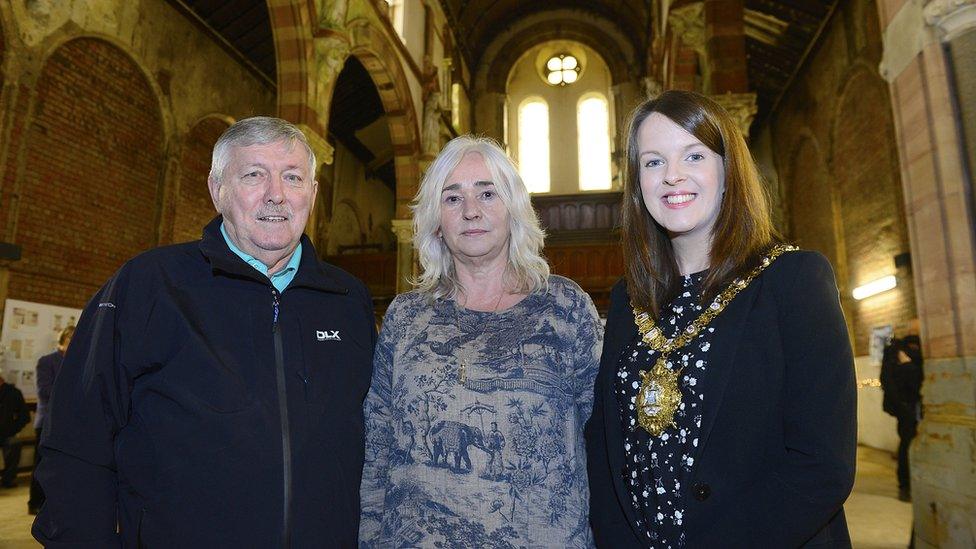Sailor ID cards shed light on Belfast's maritime history
- Published
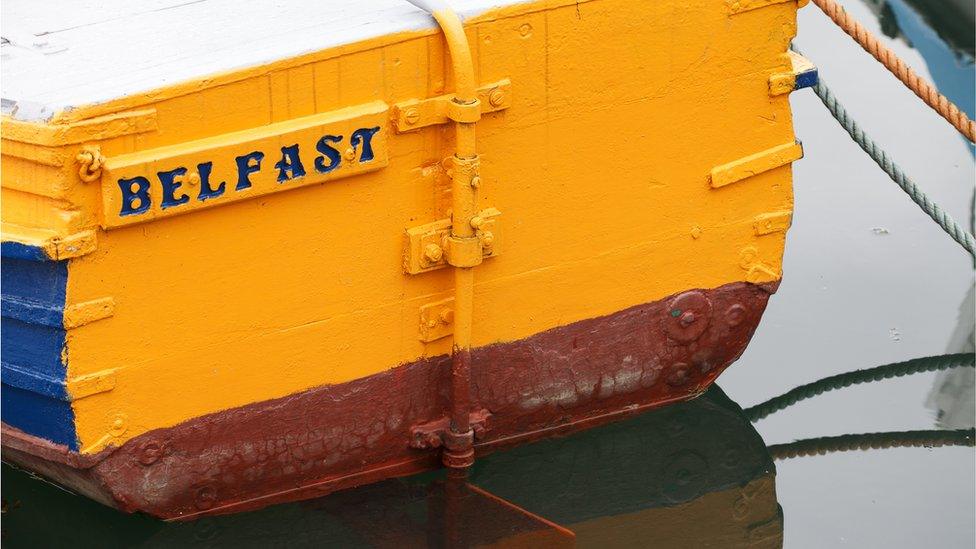
In 1918, as World War One was drawing to a close, the government decided to document its merchant seamen.
They were the sailors whose ships had transported soldiers and imported supplies, to keep the home fires burning and the nation's tummies filled.
Because of their vital logistics role, these sailors were exempt from conscription.
However, with manpower running out, the government decided to document the men who were claiming to have gone to sea.
According to researcher David Snook, government officials, who wanted to be sure the men were who they claimed to be, invested "a lot of money" in a photographic identity card system.
"It was so they could check to make sure... if they were merchant seamen... and going to sea," said Mr Snook.
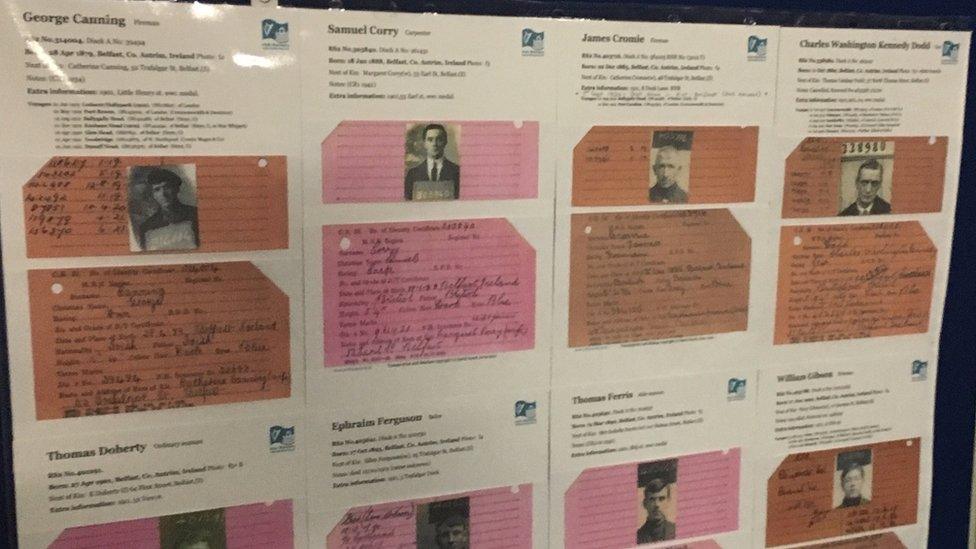
A display of sailors' identity cards from World War One have gone on display in Belfast
Although there was no conscription in Ireland, 23,000 Irish-born seamen were documented.
Mr Snook, originally from Bristol but living in County Dublin, found the cards while researching his grandfather's story.
He happened upon one card belonging to a man from Rush, the same village he had been living in.

David Snook found the identity cards while researching his grandfather's story
His interest piqued, he decided to compile a list of the Irish-born seamen who had played their part in the war effort.
"I put them on a database and then started looking at the coastal communities in Ireland. Would they be interested?" he asked.
"And they generally were. I've worked with museums and local communities to see what we could dig up."
The latest local community to find connections is Sailortown, the lough shore birthplace of Belfast. The identity cards of men with next-of-kin addresses in the area are on display in St Joseph's Church as part of the Maritime Festival.
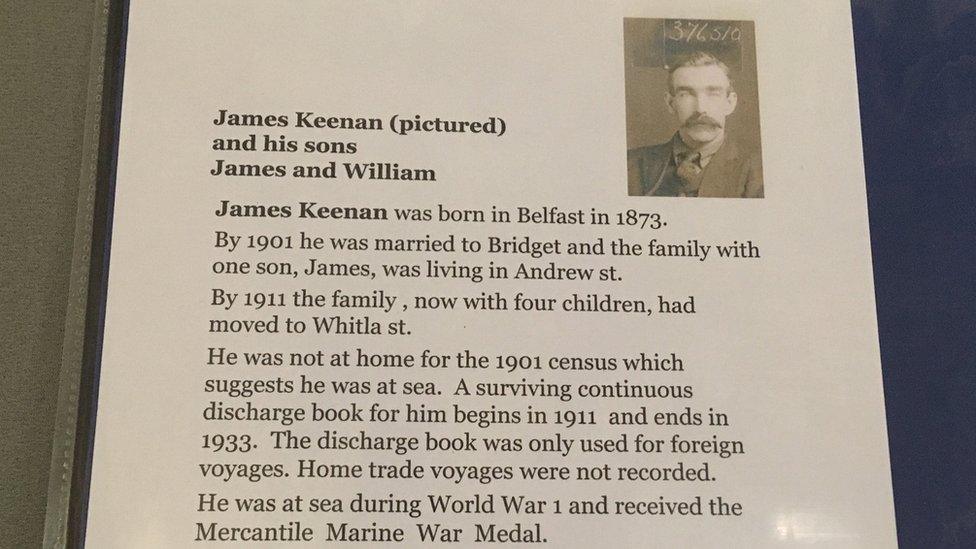
The story of James Keenan, a relative of Pat Benson
"These are 60 men from Sailortown who have been identified," said Terry McKeown of the Sailortown Regeneration Group.
"So we put some of their names out on social media and people came back and said, 'Oh! That's my grandfather, that's my father, that's my great-grandfather."
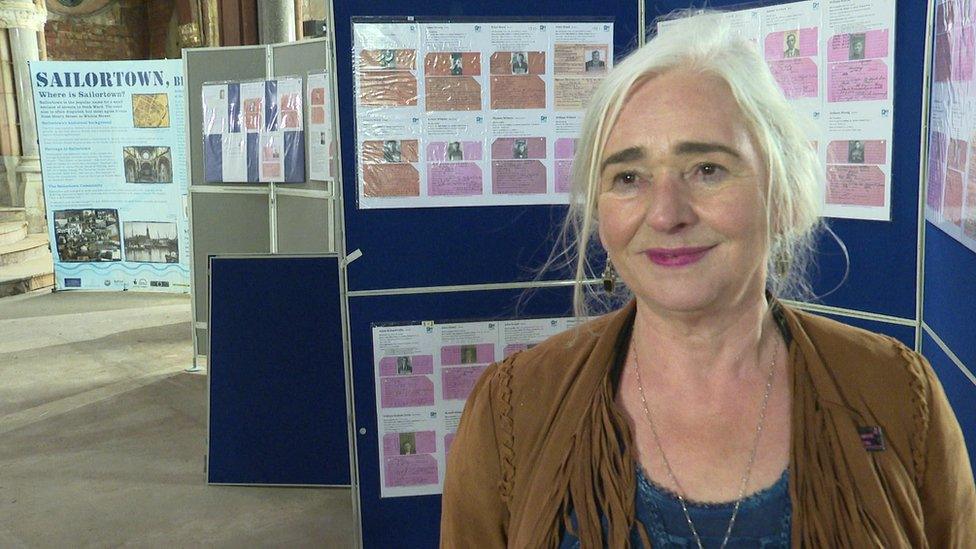
Terry McKeown said the cards give ancestors of the sailors 'a sense of belonging'
The group's chair, Pat Benson, who is also a fifth generation seaman, has discovered relatives he never had the chance to meet.
"That's my grandfather and that's another uncle," he said, pointing to the photos.
"My grandfather was actually in the Boer War and the other one, he was in the Army and his other brother was in the Army, so we were on the fighting front wherever we fought, whether we were on the Atlantic or on land.
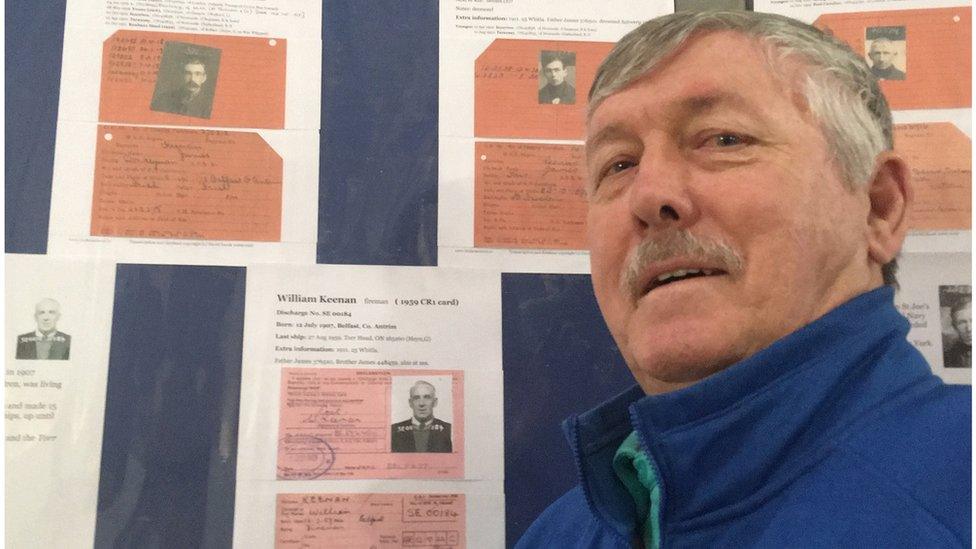
Pat Benson, chair of the Sailortown Regeneration Group, discovered relatives through the identity cards
"You always got told stories when you were young, but nobody ever kept the records. I had to actually speak to one of my aunts before she died at 90 recently, to tell me the past history.
"There were so many stories about, because they all went all over the world, and you weren't sure what one was true and what was a yarn. But it's just great to see it all put together."
As the men are identified and their stories added to, it seems as though, in many ways, they have been brought home by returning to the old church.
'Ever-expanding circles'
"We have a marriage certificate of one of them who jumped ship in New York, after the war in 1919, and sent back for his family a couple of years later when he'd got settled," said Ms McKeown.
"There are so many links, it's like ever-expanding circles."
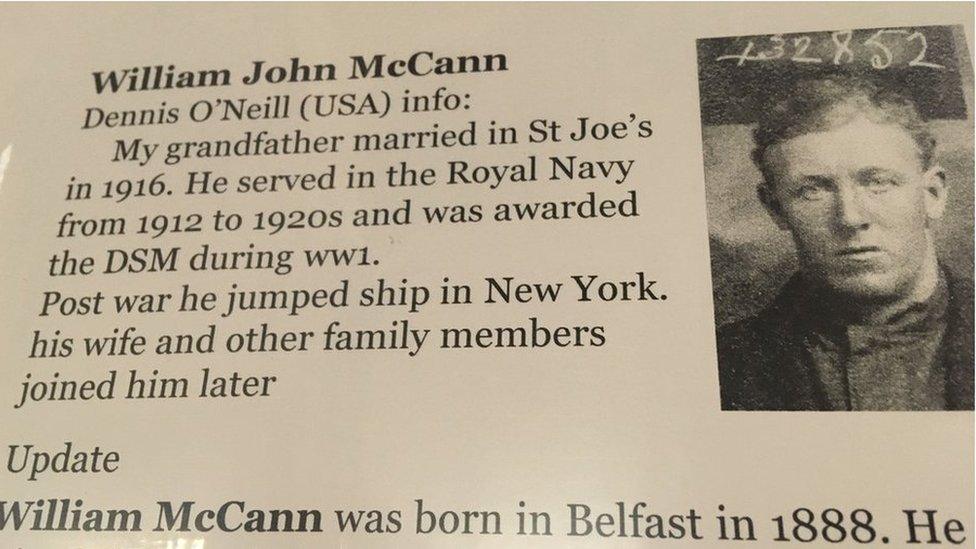
William John McCann, who jumped ship in New York and settled there
The hope is that the display of photos will lead to further links being identified and renewed interest in this old part of Belfast.
"The fact that we have the photographs makes this something different," Ms McKeown said.
'Sense of belonging'
"We're beginning to match them up to the descendants. I think this is the start of beginning to focus on Belfast's maritime heritage and particularly with Sailortown.
"I think we really need to start to look at the wider maritime heritage and the people who worked on the docks as well.
"What that does is it gives people a sense of belonging, it gives people a sense of where they're from and in particular, for Sailortown, it gives people a sense of what Sailortown was all about - the generations of their family that came into this church, and the generations of their family that went to sea."
- Published8 July 2016
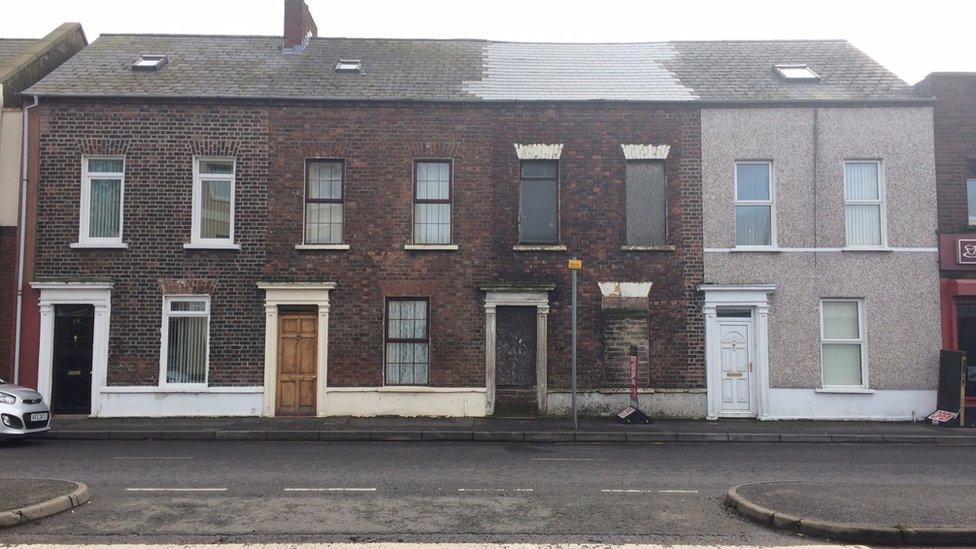
- Published8 May 2018
